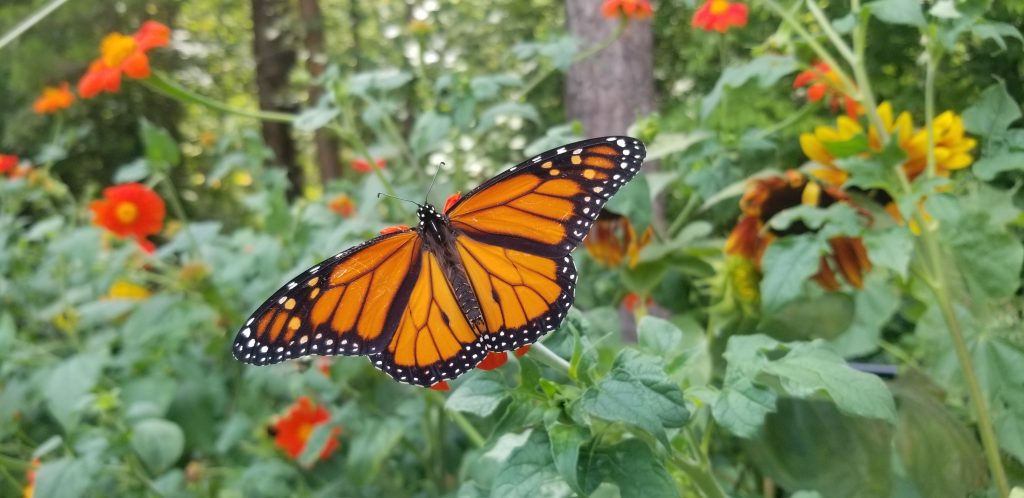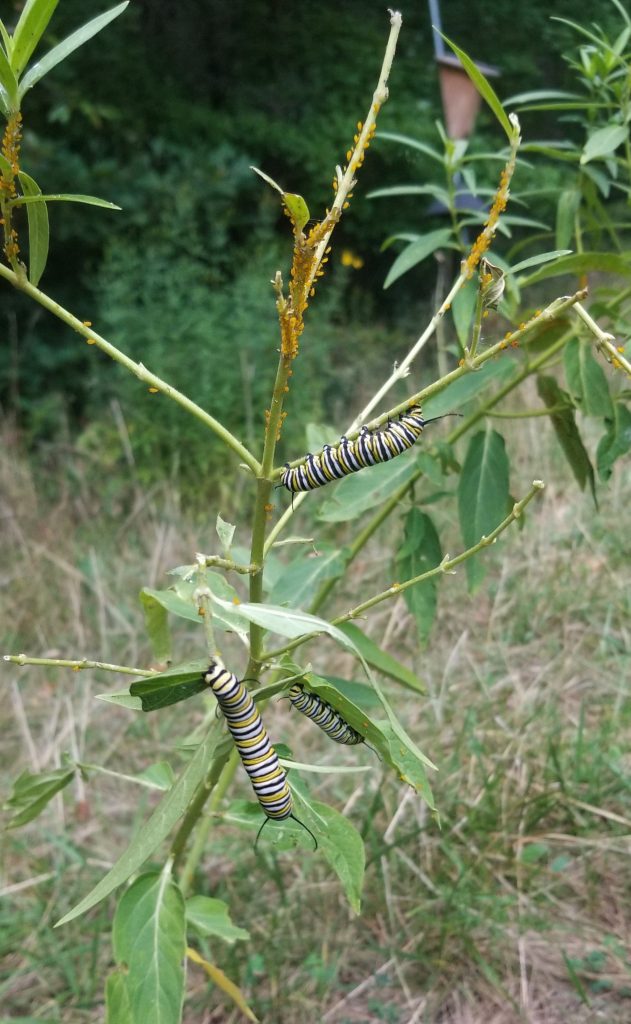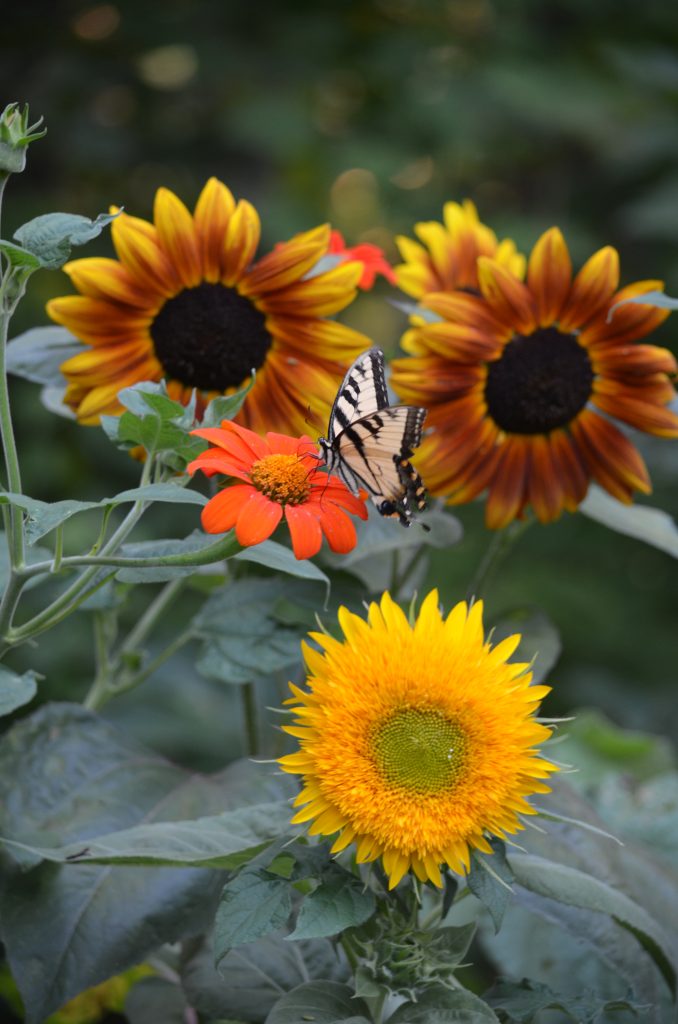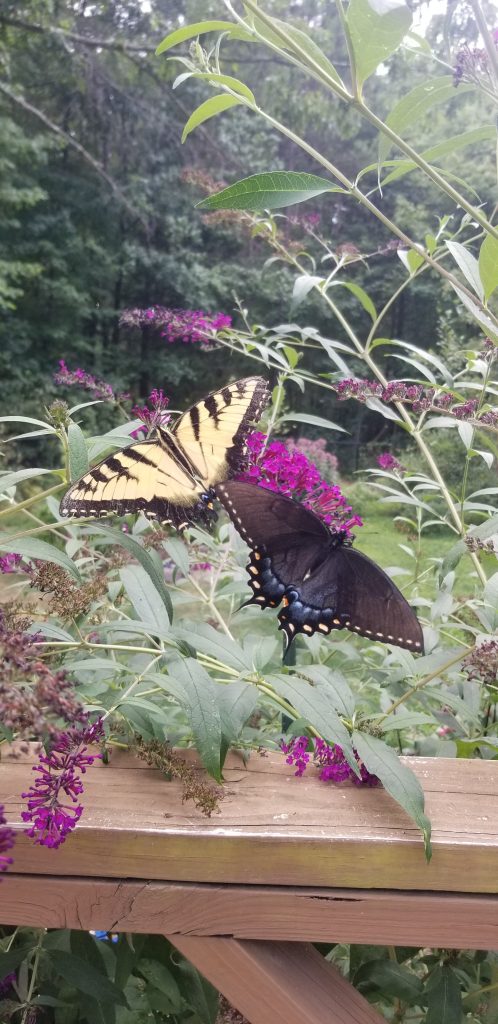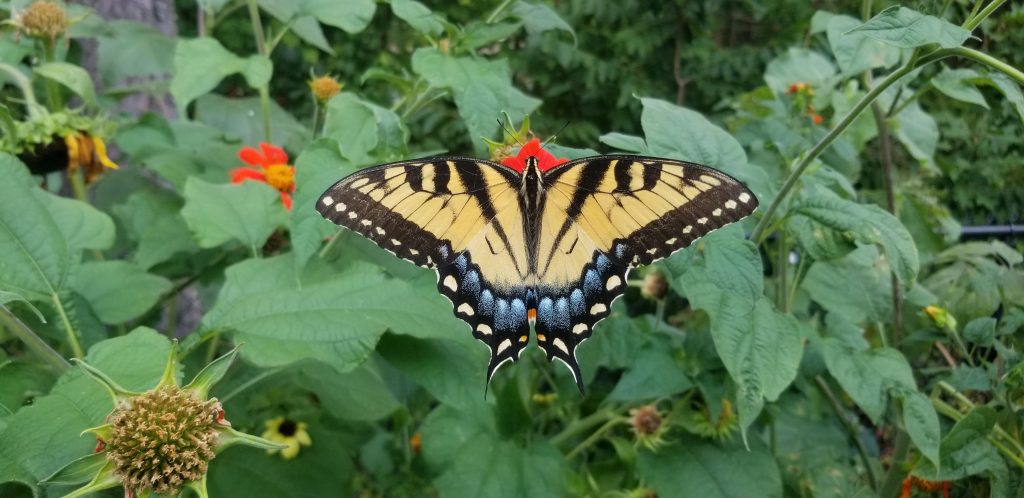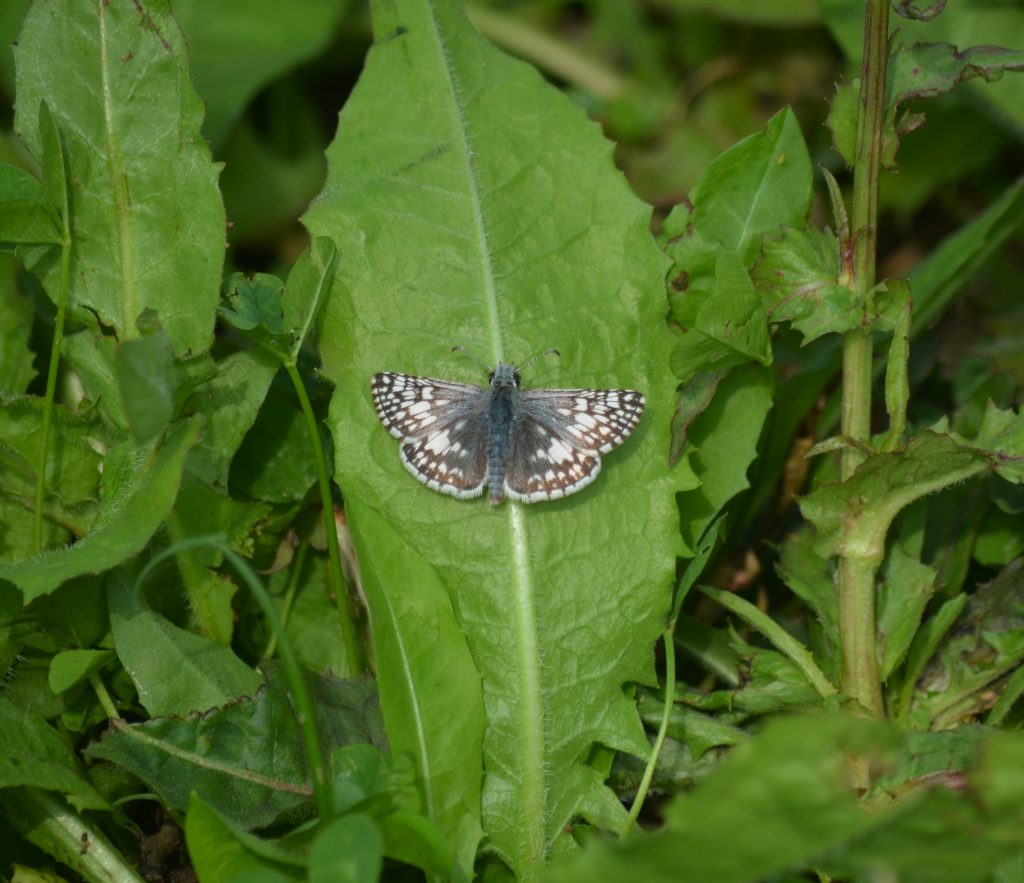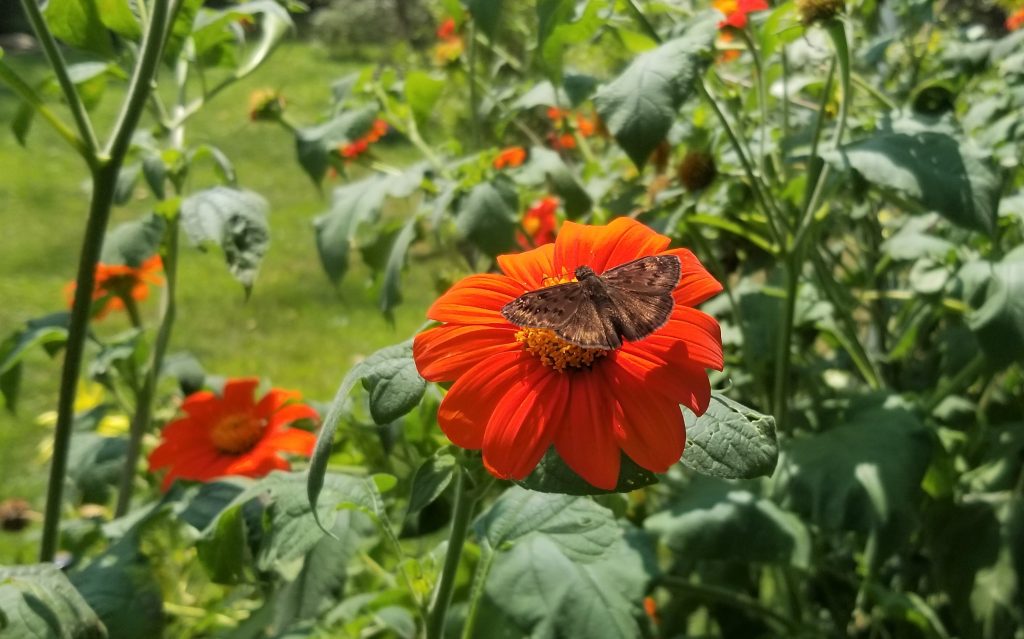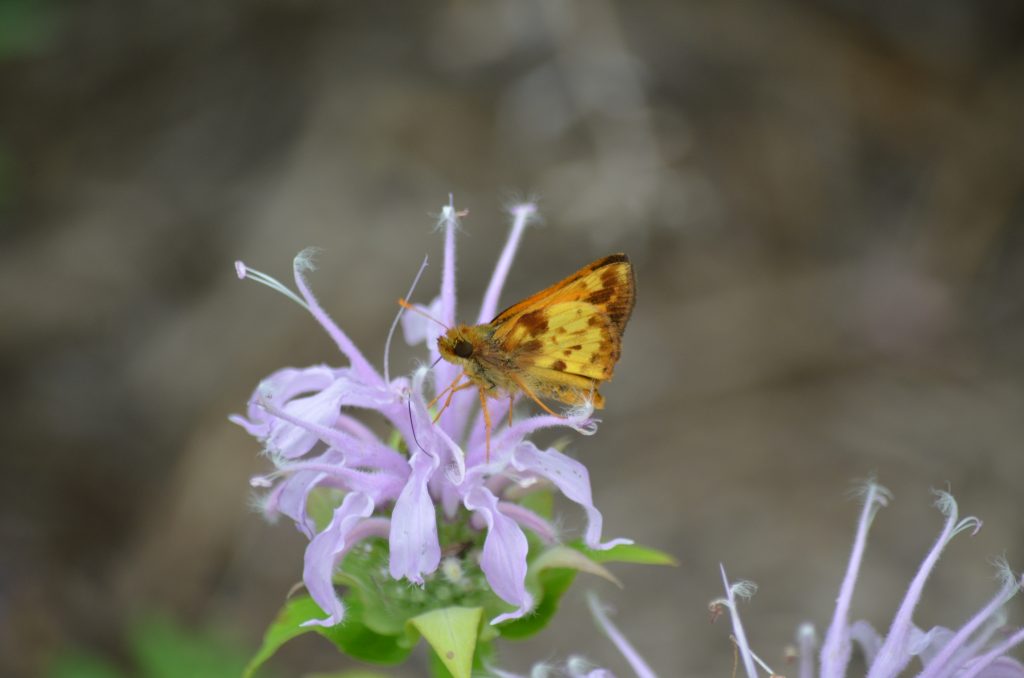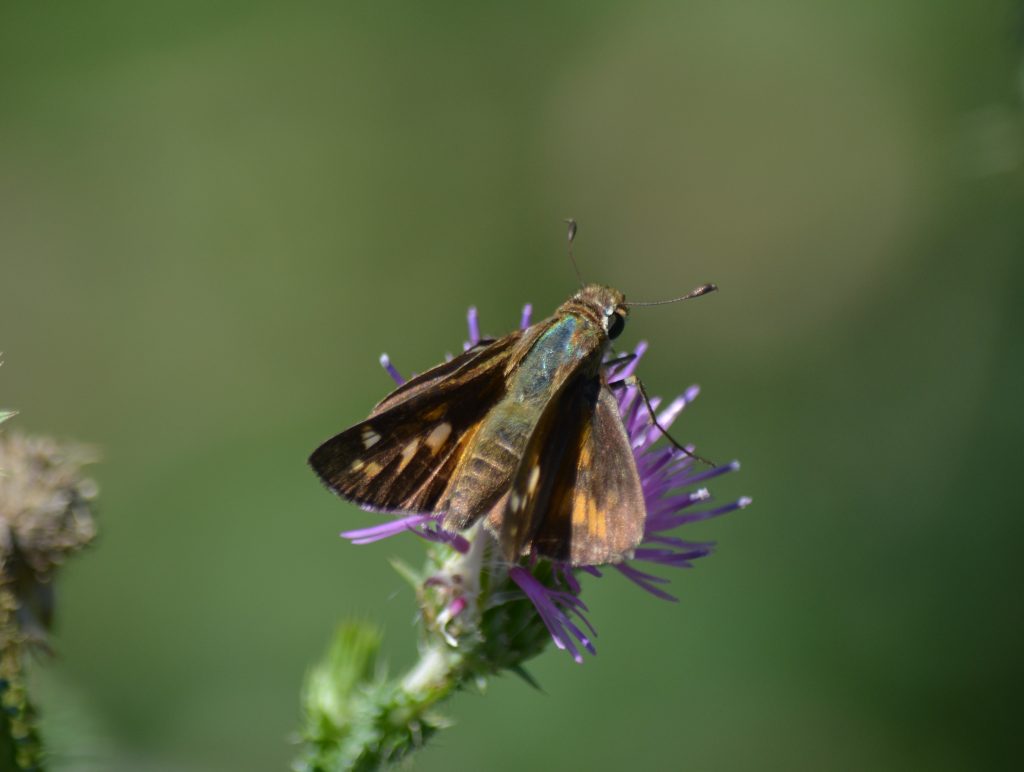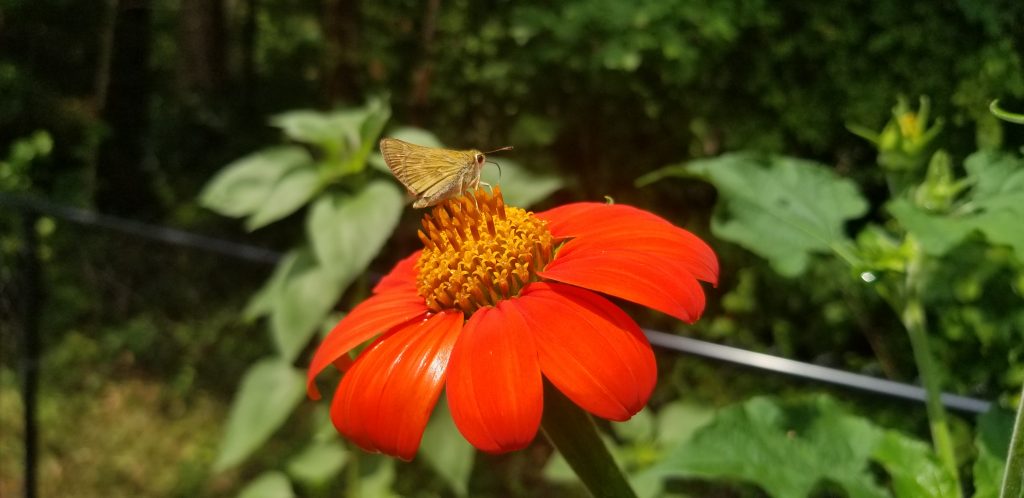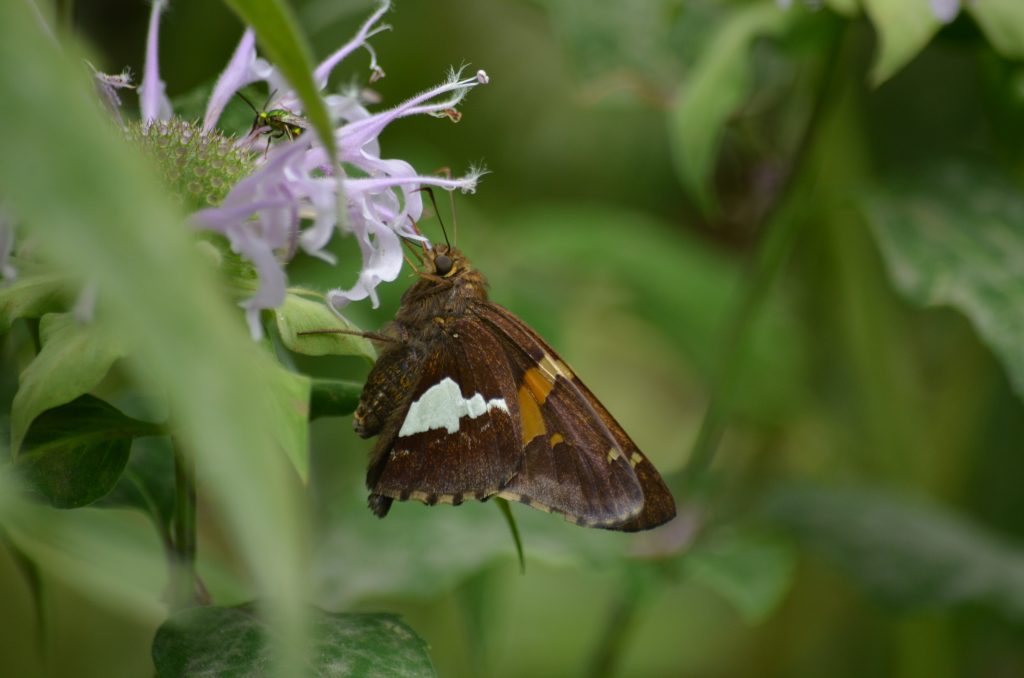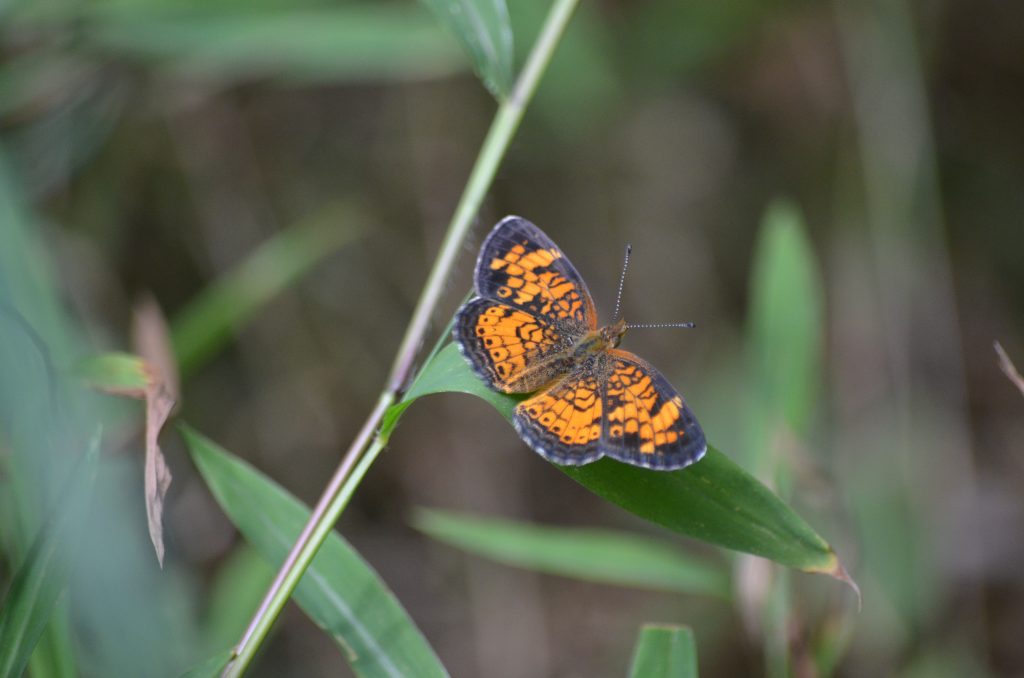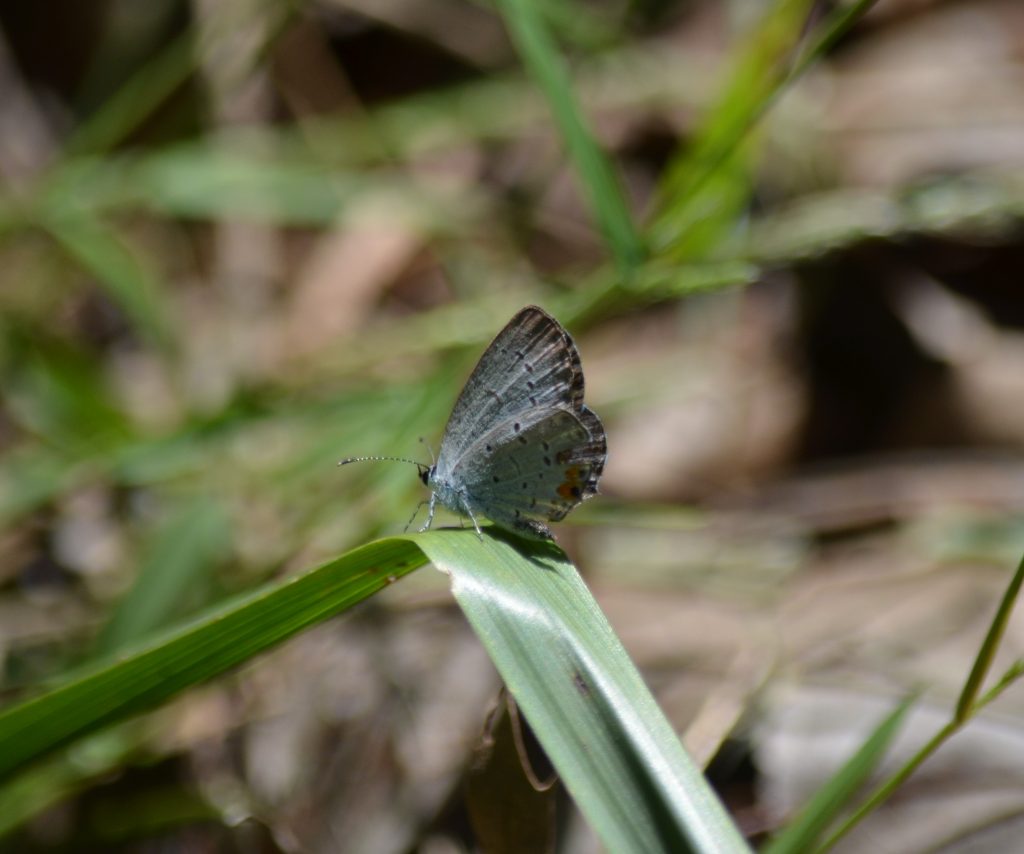Our 2021 butterfly sightings have been a real bonanza! Maybe we’ve spotted many more this year because of having to spend more time around our home, due to the pandemic. However, we’d like to think that we’ve had something (positive) to do with it!
Since we moved into our new property here in Virginia in 2017 (from Pennsylvania), we’ve worked hard at trying to improve the habitat for all kinds of pollinators, which included adding many new plantings. I’ve tallied about 25 different species that I can identify this year, and a few more that I can’t! There’s a lot of little, beautiful, butterflies that look alike-stay tuned! So, here’s our photo gallery (so far this year) of what we’ve attracted.
Probably the showiest of all our local butterflies are the Swallowtails. Most of these are large, colorful and regularly visit an assortment of both perennial and annual flowers. The Tiger Swallowtail is the state insect here in Virginia. They get their name from the yellow color with black stripes. Females will show pretty shades of blue on their lower hind wings. They also occur in a dark phase (females only). The middle photo below shows both color phases together on our Butterfly Bush. They really love sunflowers, especially the smaller Mexican Sunflower (Tithonia).
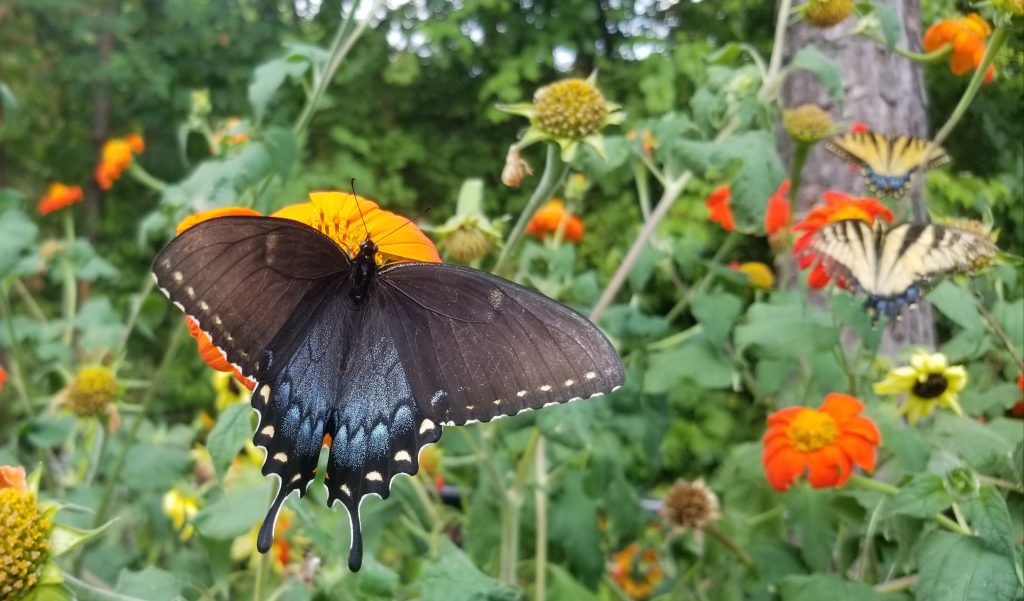
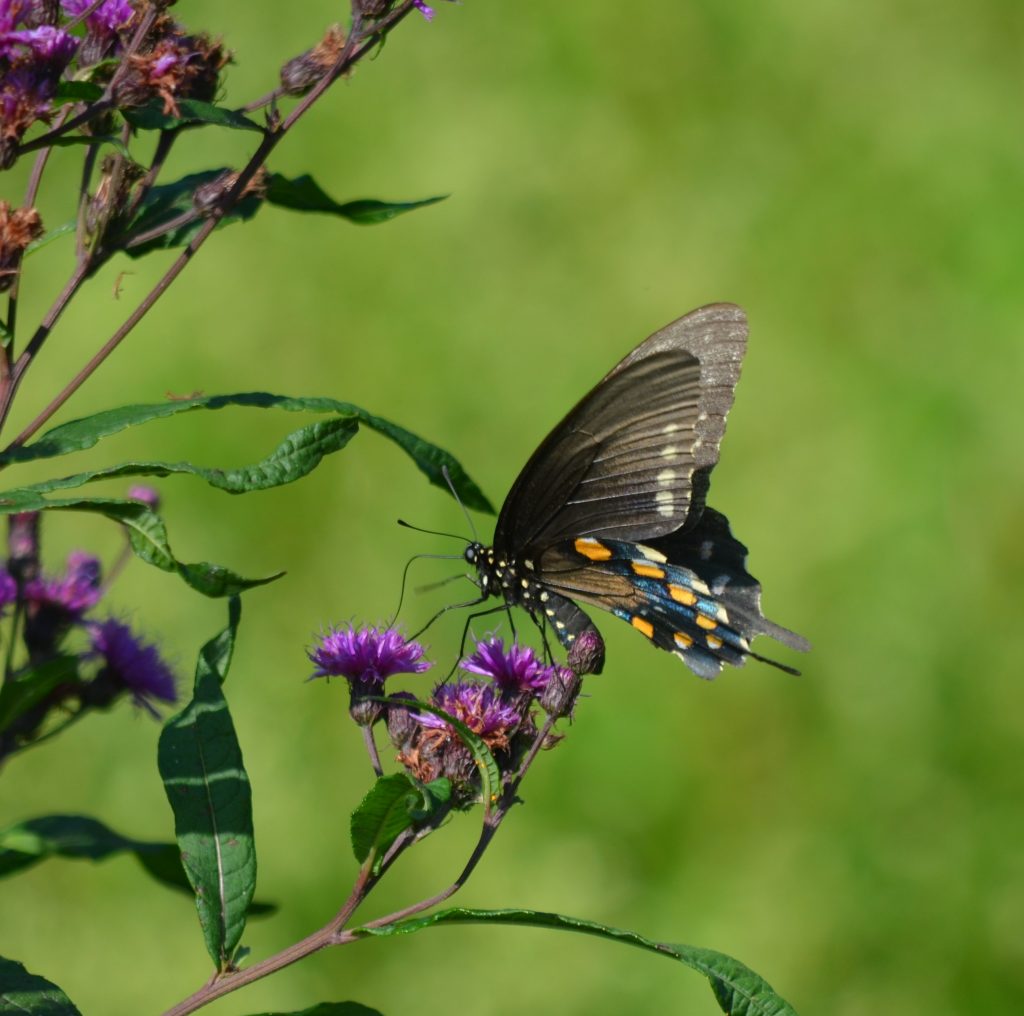
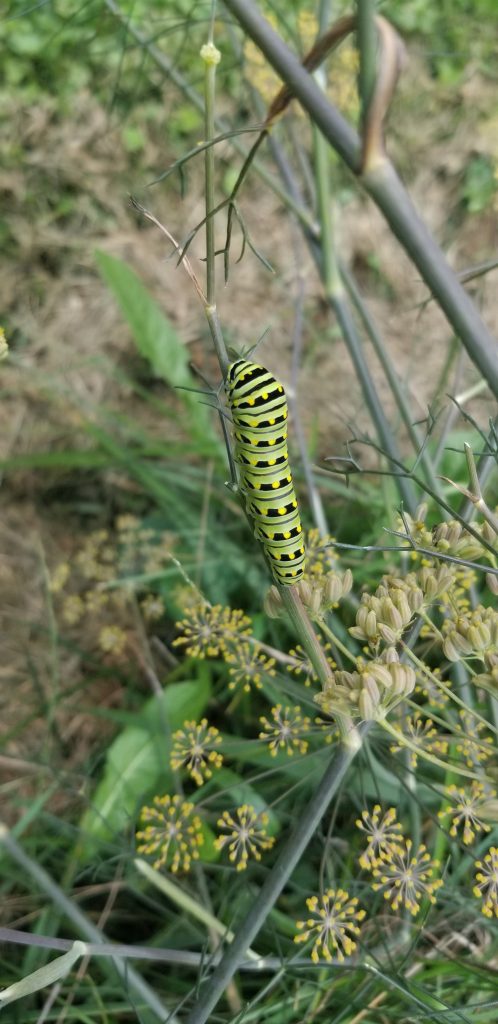
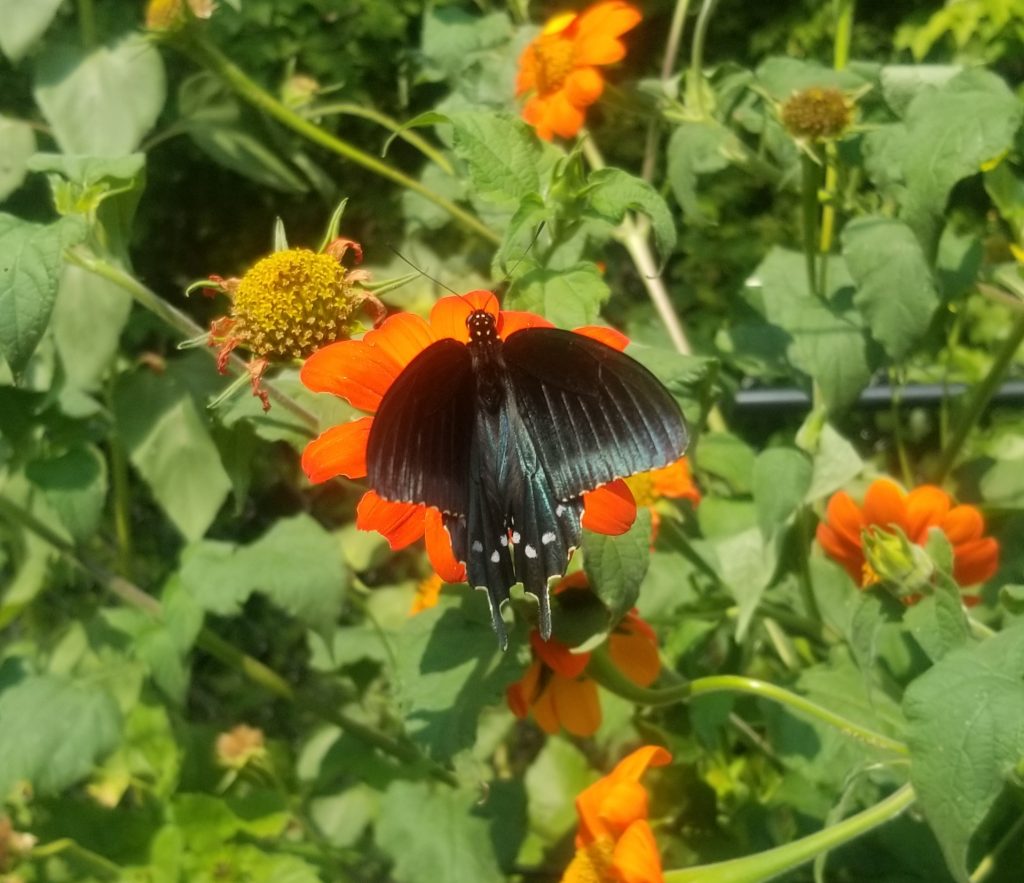
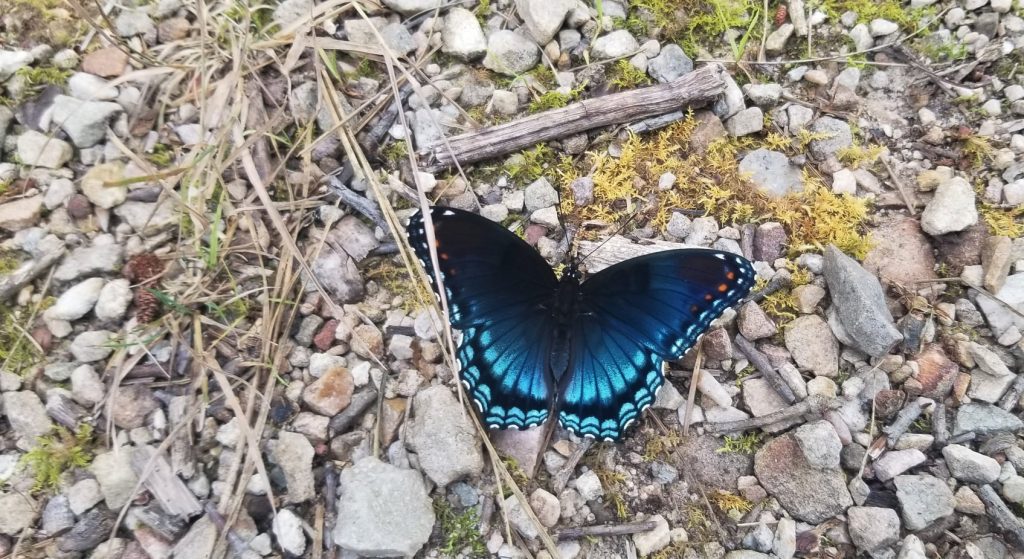
The group of butterflies called Skippers (above) includes dozens and dozens of different species-many of which look very much alike. Here’s a few that I think, I was able to identify! From top left, to bottom right: Common Checkered, Columbine Duskywing, Zabulon, Tawny-edged, Pecks, and my favorite, the Silver-spotted. These little ones are enjoying Tithonia, Monarda and common thistle.
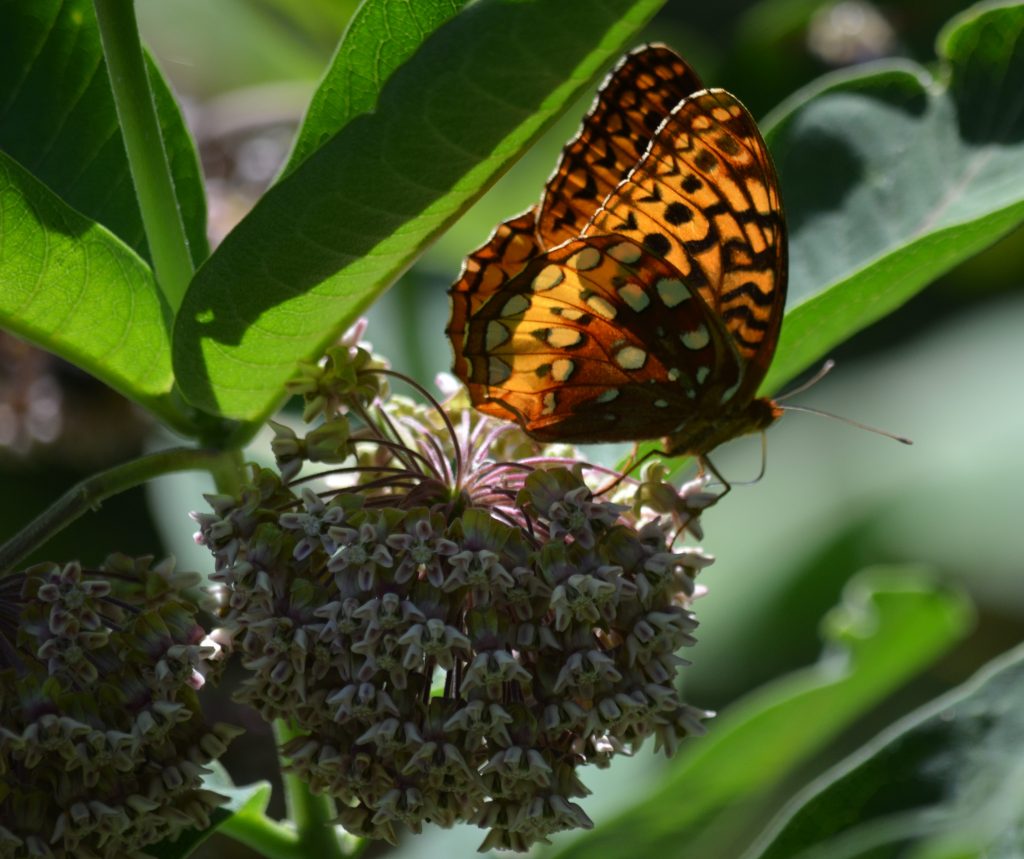
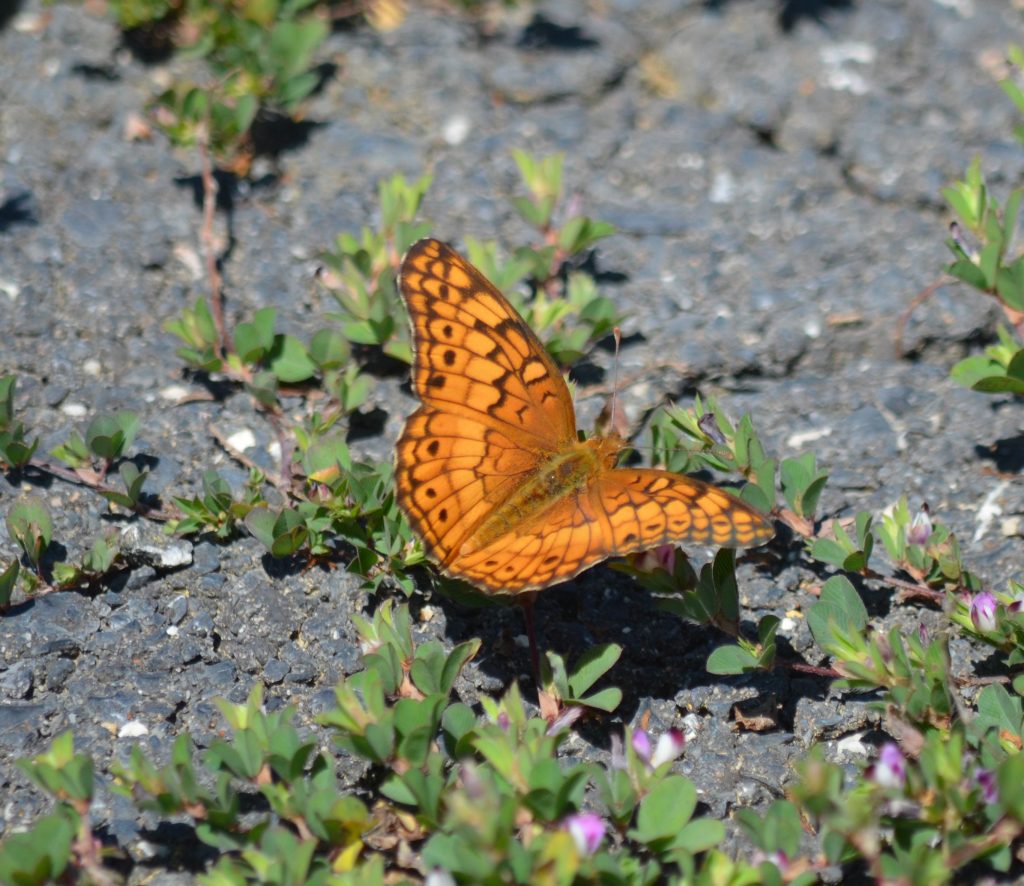

There are many more tiny butterflies, than there are big ones. You have to look close for these beauties, since they usually stay close to the ground. From Left to right: Pearl Crescent, Eastern-tailed Blue and a pair of Red-banded Hairstreaks. These three are all about the size of the end of your thumb.
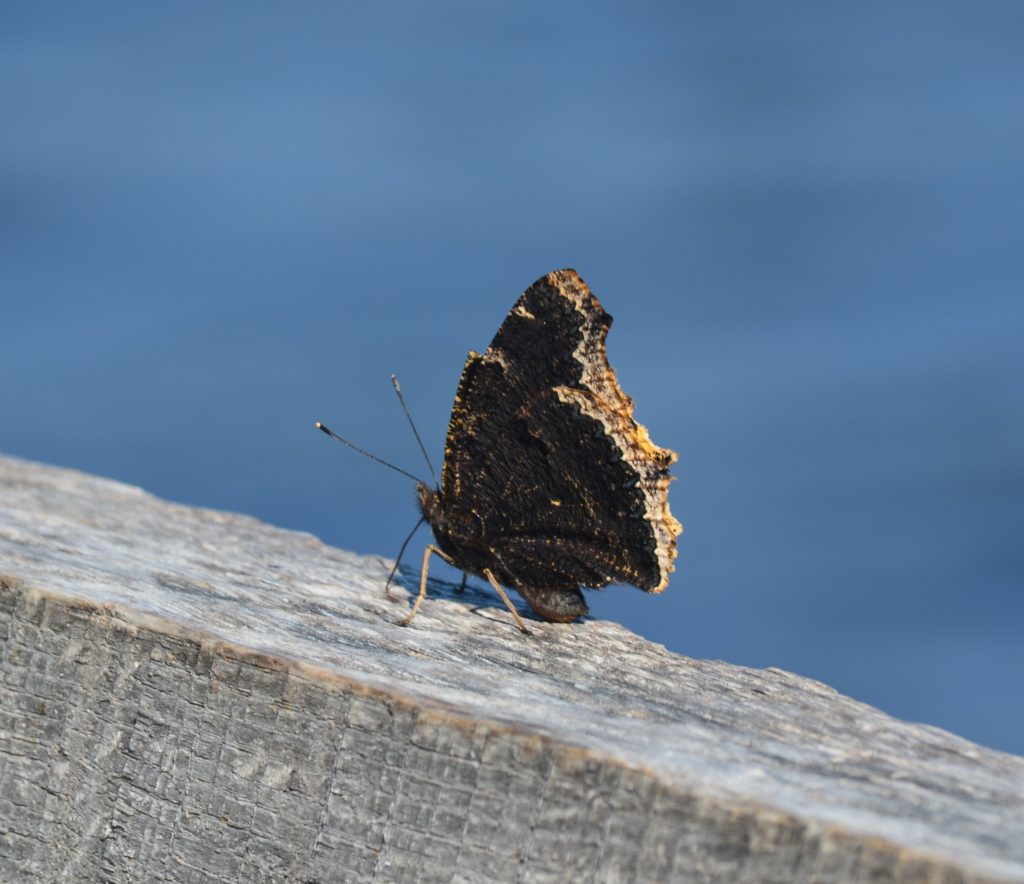
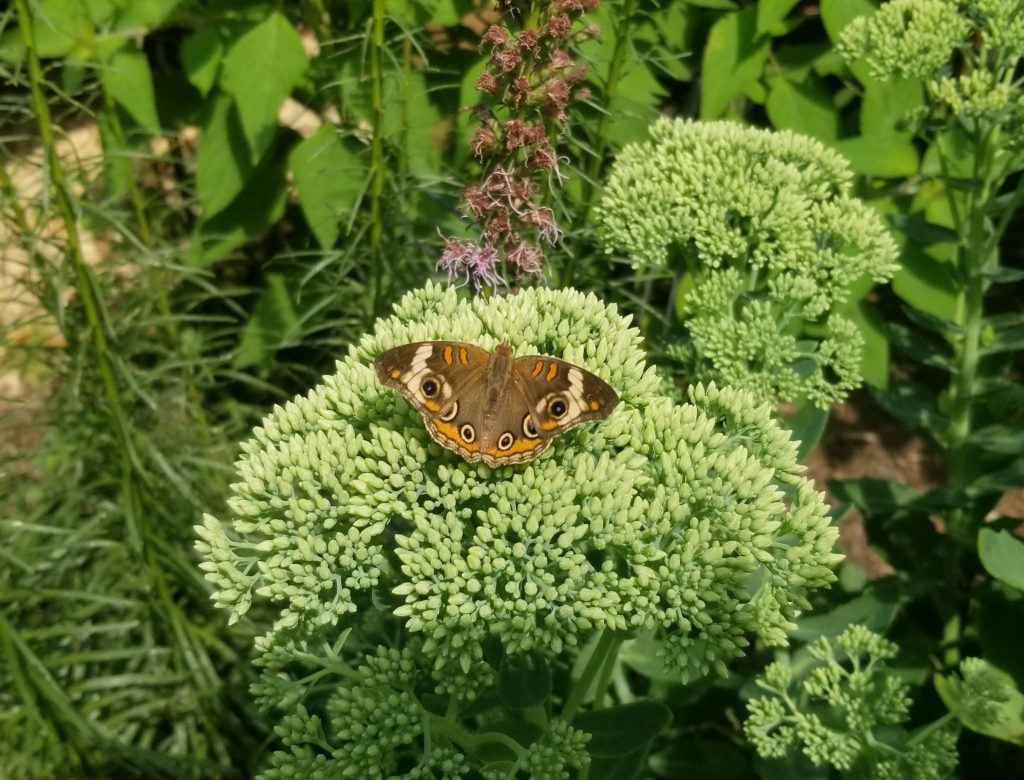
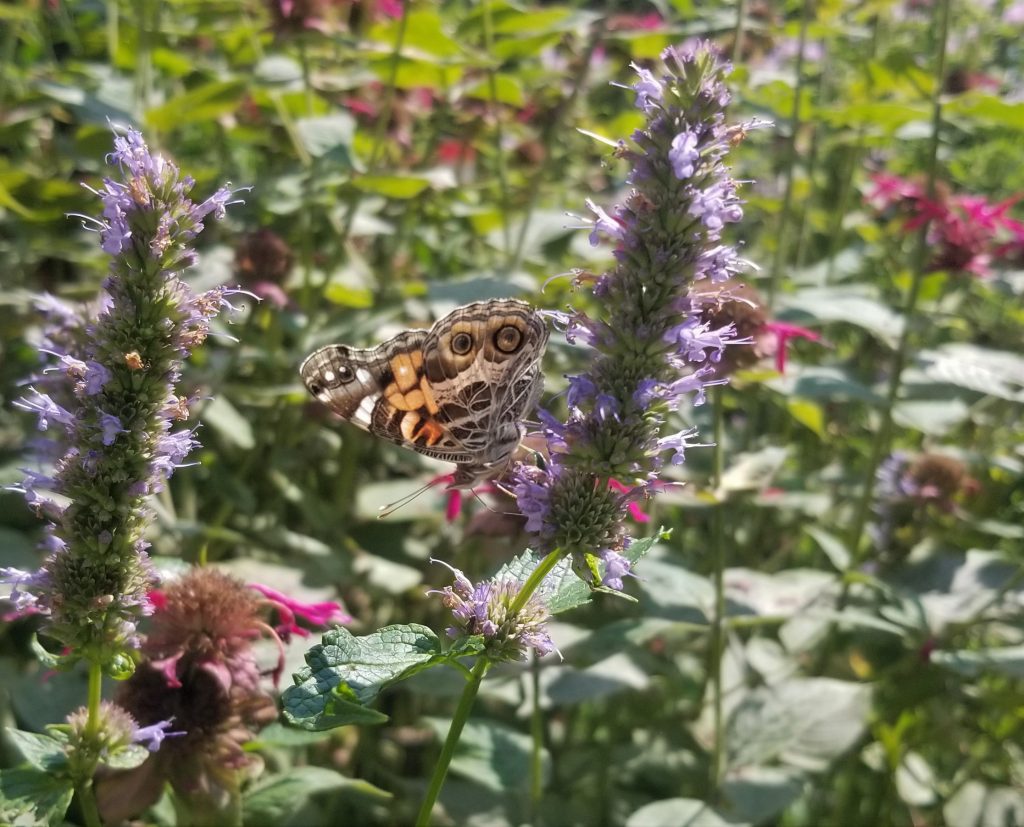
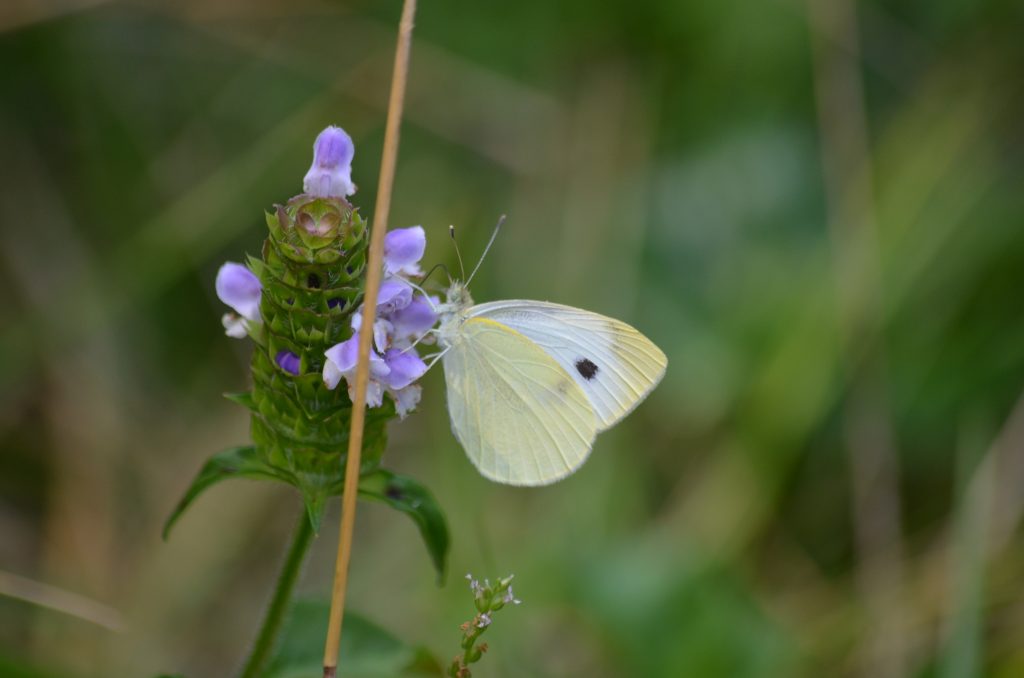
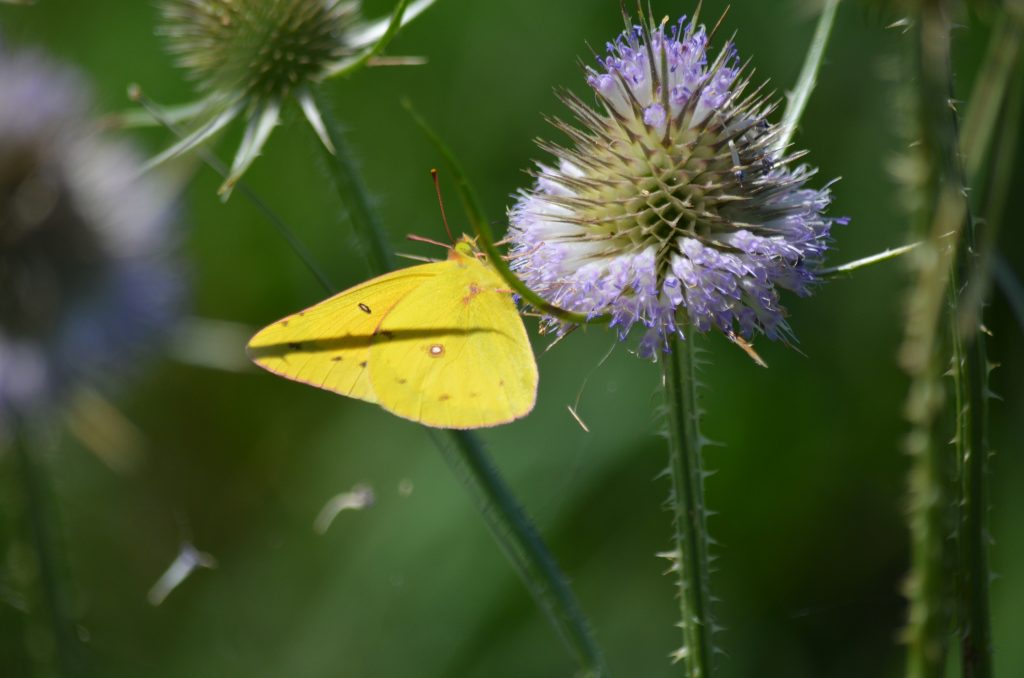
……..and finally, the majestic Monarch. This well-known butterfly has been the focus of many conservation efforts in the past decade, since its population in some areas has declined by nearly 90%! Even in our four short years here, sadly, we don’t see too many of them, even though we now have a good stand of Common Milkweed. However, in the past few weeks, I did manage to find a dozen caterpillars feeding mainly on Swamp Milkweed, but also on Common Milkweed and Butterfly weed.
